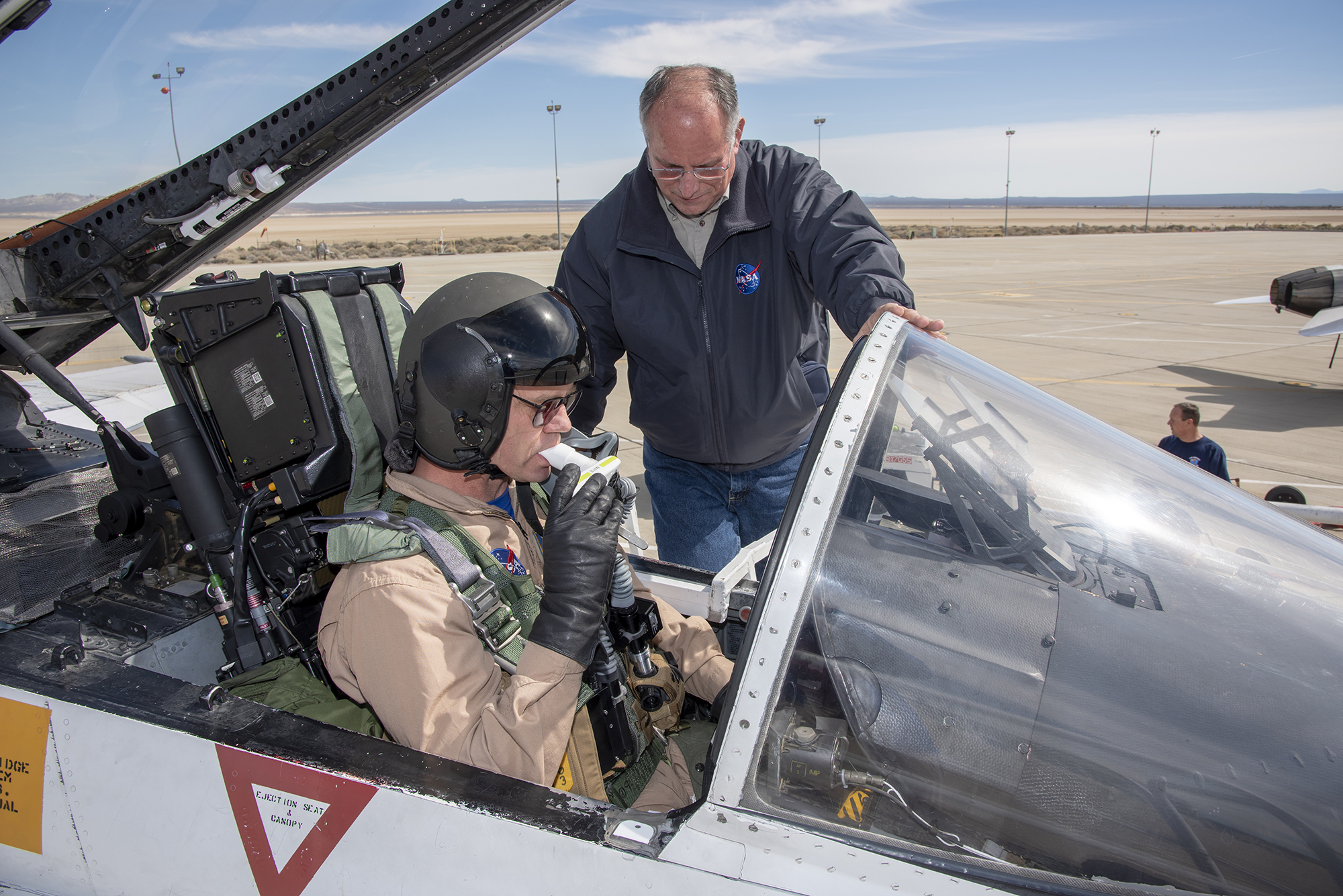
Pilots who fly high-performance jet aircraft use oxygen masks and other equipment to help them breathe when flying and maneuvering at high altitudes. Breathing problems have been encountered during some of these flights since 2010 but the source of these problems was not understood.
The Pilot Breathing Assessment project set out to discover why pilots were still having breathing challenges by documenting in depth how pilots breathe while in flight. Beginning in early 2018, this was accomplished by using NASA test pilots flying NASA’s F-15 and F-18 aircraft based at Armstrong Flight Research Center in Edwards, California.
The project released its findings in a final report in March 2021, which includes recommendations for users and manufacturers of the aircraft systems. Some of these suggestions include measuring pilot breathing on location and using the results to create future hardware to meet pilot physiological needs, a standardized flight test procedure to evaluate an aircraft’s pilot breathing system, and trusting pilot reports of breathing as a significant indication of breathing system performance.
“The project gave us the first real look into how pilots interact and breathe with a high-performance aircraft’s breathing system,” said Clint Cragg, principal engineer of the NASA Engineering and Safety Center. “Notably, we made a number of discoveries that other researchers and breathing system designers will be able to use for future developments.”
This report and testing follow a previous assessment in response to a U.S. Navy request made in 2017, to the NESC, located at NASA’s Langley Research Center in Langley, Virginia. The request was to conduct an independent review of the Navy’s effort to address an increased occurrence of physiological episodes among pilots across its fleet of F/A-18 aircraft.
Pilot physiological episodes can result in cognitive impairment, numbness, tingling, lightheadedness, behavioral changes, and fatigue that may be life threatening for pilots. The extent to how a pilot’s lungs transmit oxygen to the brain while breathing through oxygen systems can fluctuate while flying a variety of scenarios, which can sometimes result in these episodes.
“This information matters to the pilot community, and specifically to the test community, because it shows us how important the integration and testing of these systems is to pilot health,” said Kevin Hall, Air Force F-35/F-16 test pilot. “It also reinforces the importance of pilots to speak up when they experience trouble with breathing systems.”
Using five NASA test pilots flying six flight profiles in F-18A/B or F-15D aircraft, the assessment logged more than 100 flights and gathered more than 4,750 minutes of analyzable data about how the pilots interacted with the aircraft while flying.
During the testing, the team made measurements within the pilots’ inhalation and exhalation oxygen lines, as well as inside their masks. In addition, spirometry tests to measure the volume of air inspired and expired by the lungs were conducted before and after many of the flights. This measured how much air the pilots were able to breathe out by exhaling as forcefully and for as long as they could. Pilot questionnaires before and after each flight asked about diet, exercise, and other factors that could affect the mission.
Test flight profiles were chosen to be challenging but still within a moderate range to avoid risk of physiological episodes. Although these flights did not reach the full extent of military combat operations, breathing issues did occur during the flights and are described in the report. In support of follow-on work by the U.S. military, this report presents a standardized flight test procedure to establish a baseline of aircraft breathing system performance.
The NESC team noted that data needed to make informed decisions about human and system interactions did not exist prior to this review. The team was also afforded the opportunity to review and analyze a limited amount of F-35 pilot breathing data. Also, F-35 pilots who have experienced physiological episodes were interviewed for the report.
For more about the Pilot Breathing Assessment project, visit:
Author: Teresa Whiting





































